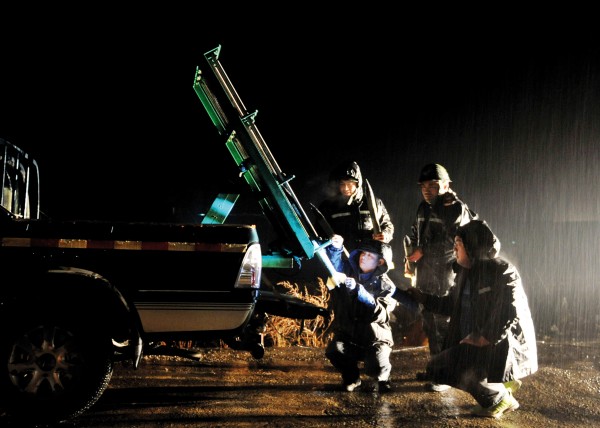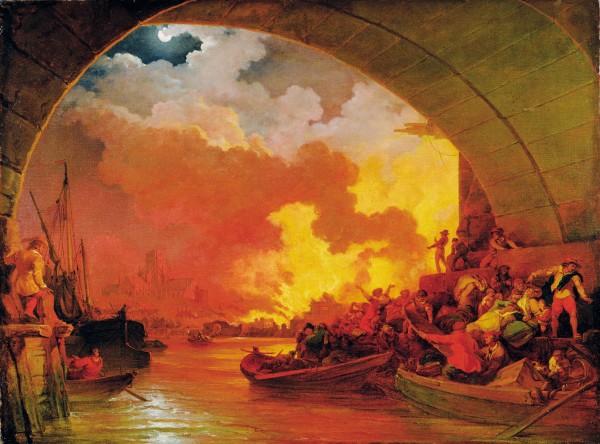Chilling out with ice ages
Around 45,000 years ago, when our ancestors were neighbours to the Neanderthals in Ice Age Europe, there was a kahikatea tree growing beside a stream which flowed out of the eastern side of the Rimutakas. Erosion being very active during the Ice Age, the stream carried large quantities of shingle out of the ranges when it flooded. In one flood, the base of the tree was covered in shingle about half a metre deep. Yet it survived and grew a second set of roots on top of the new surface. However, as more shingle was dropped by subsequent floods, the tree died and was eventually completely covered by stones.
Today, during what is a warmer interglacial climate, a stream is cutting down through the shingle deposits and the kahikatea tree is emerging again into the light. Its top has disappeared and its surface is deeply cracked, but it is still upright and easily recognisable as a tree. What is amazing is the depth of the layer of shingle above it. Measuring 40 metres in places, it is testimony to the extent of erosion during the last Ice Age.
Erosion was vigorous during the Ice Age for several reasons. First, the cold conditions caused the tree line and the altitudinal limit of other vegetation to fall to much lower elevations than they are today, exposing underlying rocks to weathering. Second, the weathering processes then were more severe than they are today. Sunlight was almost as intense as it is nowadays, so its ability to heat rocks was similar. However, the average air temperature in New Zealand was more than 5°C below today’s values, so the overnight minimum temperature experienced by rocks would have been much lower. Consequently, thermal stress as the rocks expanded and contracted would have been greater, and the rocks more prone to shattering.
The onset of the Ice Age seems to have been a protracted affair. Go hack 50 million years to the Eocene and Antarctica was much warmer than it is today, covered largely by forest even though it was near the South Pole. Things began to change as continental drift gradualh altered the pattern of the world’s ocean currents and restricted their ability to deliver heat to polar latitudes. The cold intensified in the south some 25 million years ago when the continents of Australia and South America moved far enough away from Antarctica to allow circumpolar currents to develop in both the ocean and the atmosphere. Cut off from warm waters of tropical origin and the weather systems they had brought with them, Antarctica cooled and developed an ice sheet with glaciers extending to sea level.
Some time later, the continent of India collided with Asia. As India pushed north into Asia, the Himalayan mountains were created and the Tibetan Plateau raised up. About this time, the Rocky Mountains were also lifted up. Both these great obstacles diverted the westerly flow of the atmosphere, causing cold air of Arctic origin to flood south more frequently and to a greater extent than previously.
Finally, between two and three million years ago, North and South America were joined together by the isthmus of Panama. This sliver of land blocked the warm ocean current that flowed westward along the Equator and diverted its waters northwards to join the Gulf Stream off the east coast of North America. Evaporation was high when the water was in tropical latitudes, and as the water became saltier it also became denser. Consequently, as it moved polewards through the North Atlantic, the water began to sink below the surface earlier in its journey and no longer carried as much warmth to near polar latitudes.
This allowed the formation of large ice sheets to begin over Europe and North America, and it is at this time that most commentators consider the Ice Age to have begun, with global average temperatures dropping as much as 4°C below today’s level.
The closing of the land bridge between the Americas caused another great upheaval, as it allowed animals from both continents to migrate to the other. North America gained possums, porcupines, monkeys, armadillos and sloths from the south, while South America gained rabbits, dogs, horses, pumas, and llamas from the north.
Many of the large animal species in South America became extinct after the exchange, but this may have been because of climate change as much as conflict between species, since animals as diverse as the horse and the mastodon became extinct on both continents.
Global average temperatures have not been uniform since the onset of the Ice Age, but rather have fluctuated on a scale of about 100,000 years between warm interglacials, such as the Earth is in now, and full glaciations, when the average temperature drops by more than 4°C.
The driving mechanism for these changes seems to be small cyclic variations in the Earth’s orbit around the Sun. If you can imagine driving a large knitting needle through the Earth along its axis of rotation from the North Pole to the South Pole and then standing back to admire your handiwork, you would see that it made an angle of 23.5 degrees with the plane of the Earth’s orbit around the sun. This tilt is what causes the seasons. If the needle were perpendicular to the plane of the orbit, there would be no summer or winter, but only a kind of permanent spring. In fact, this angle varies from 22 to 25 degrees in a cycle that repeats every 40,000 years.
Also, the Earth’s orbit around the sun is not a circle but an ellipse, and the ellipticity varies with a regular cycle of 100,000 years. Further, there is a slow precession in the Earth’s orbit, like the wobble of a spinning top, that takes about 22,000 years for each wobble. This has the effect of varying the time of the year when the Earth is closest to the Sun. At present, this closest proximity occurs during January, which is one reason why it is easier to get sunburnt skin in a southern hemisphere summer than in the north. In another 11,000 years, the Earth will be closest to the Sun during a southern hemisphere winter. All three of these effects combine to vary the intensity of sunlight reaching the Earth’s surface.
However, the variation is not large enough on its own to explain the fall of temperature during a glaciation. A feedback mechanism is needed. One of the most important is the way a snow or ice surface can act as a mirror and reflect most of the incoming sunlight back into space. Once a large part of the Earth is covered in ice, a significant amount of the heating the Earth normally receives from the Sun is lost to space.
The key to starting a glaciation seems to be the intensity of the summertime sunlight over the northern hemisphere. When it is relatively weak, there is more chance of a significant part of the winter snow cover on the land lasting through summer and helping the next winter’s cover to be even more extensive. A runaway process can begin in which the snow cover expands sufficiently to start ice-cap formation.
Another feedback mechanism involves the increased erosion that occurs during a glaciation. Some erosion processes take carbon dioxide out of the air. But carbon dioxide is an important greenhouse gas, helping to trap some of the heat the Earth radiates that would otherwise be lost tospace. The less carbon dioxide there is in the atmosphere, the greater the cooling of the Earth. Measurements of air bubbles trapped in ice drilled out of the Greenland Ice Sheet have shown a much lower level of atmospheric carbon dioxide during the last glaciation than just after it.
Erosion and earthquake activity may also be connected. Increasingly, geologists see erosion as a significant force contributing to the uplift of mountain ranges. The rocks of the Earth’s crust are less dense than the rocks of the Earth’s mantle, on which the crust floats. Erosion can remove so much material from mountain ranges that the Earth’s crust becomes locally lighter, and therefore more buoyant, just as unloading a boat causes it to float higher. That upward movement of the crust causes earthquakes.
But the higher the mountains, the heavier the rain which falls upon them, and therefore the faster the erosion proceeds, causing more uplift and more earthquakes.
During the several million years that the Southern Alps have been rising, they are estimated to have gone up by a little over 20 kilometres. Why, then, are they less than four kilometres high today? The missing 16 kilometres has been eroded away, forming, among other things, the Canterbury Plains.

















